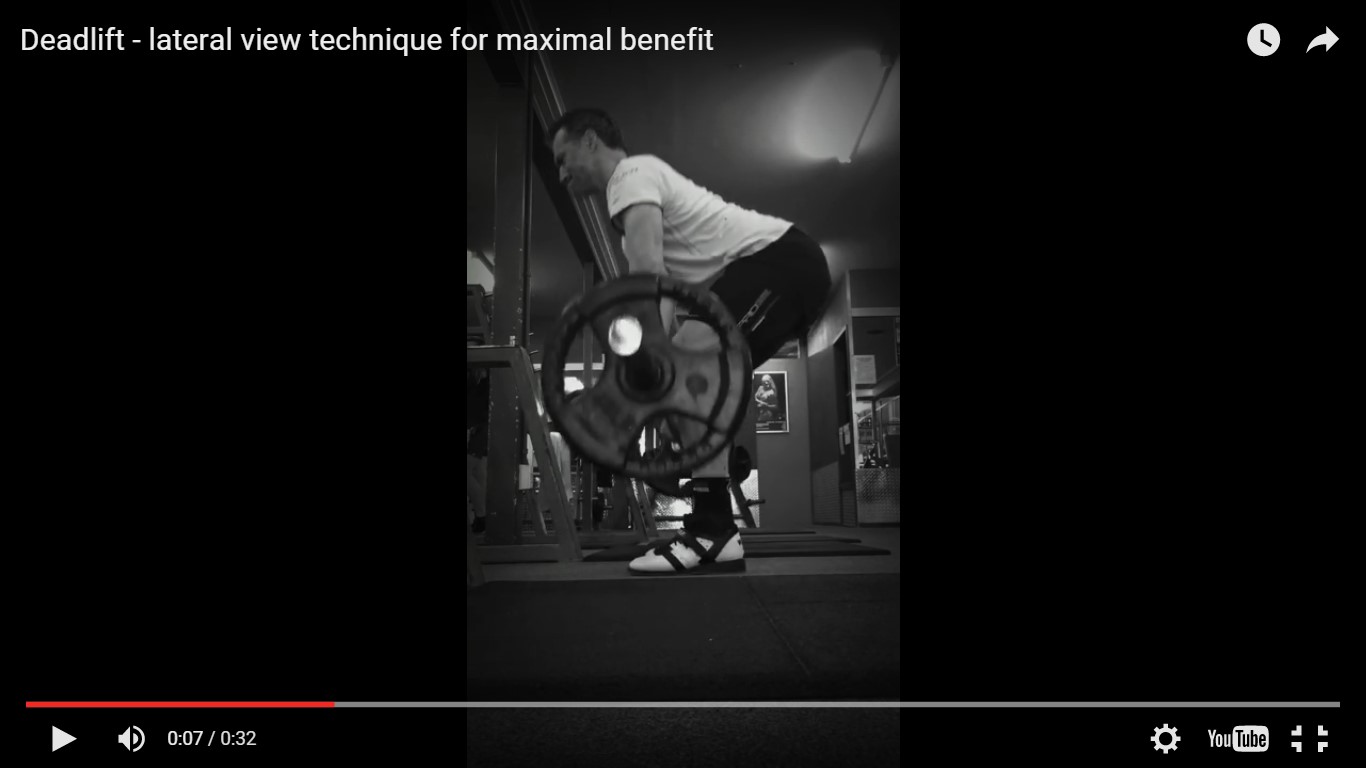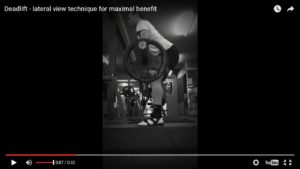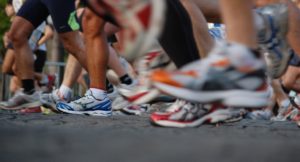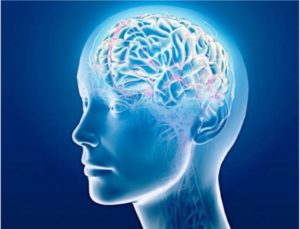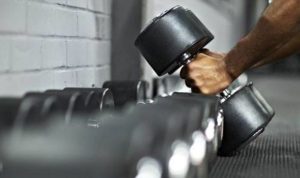FitGreyStrong fact: Weight gain occurs when total caloric daily consumption exceeds total daily energy expenditure. To achieve weight or fat loss there must be an energy or caloric deficit. Over 80 years of scientific research has confirmed this to be fact.
FitGreyStrong Advice: Don’t believe the hype. Food quality is a must and essential to good health. However, weight or fat loss will not be realised no matter how good your diet is unless an energy deficit exists. Increased total physical activity during all waking hours and an energy-deficit diet that is wholesome, natural, minimally-processed and nutrient-dense will provide a significant opportunity for weight loss to be achieved.
I’m going to make a confession. I have laboured over the last month to write this blog. I’ve spent hour upon hour trying my best to explain what I think is a simple concept. The strangest thing is the evidence published so far is conclusive but with so much shit floating around anyone looking to lose a few kilo’s in the New Year is faced with a major challenge. What info is good and what is bad? How does one decipher what advice to act on and what advice to send to the computer’s recycle bin?
As I explained recently the media and ‘rogue’ researchers have, in some ways, muddied the weight loss debate by promoting the idea that exercise doesn’t help (see here). There are many examples of the media misleading consumers by sensationalising material that has been poorly researched, lacks objectivity and obfuscates the facts.
Ironically, it is this type of questionable and controversial material that gains the most traction with the public. The confusion created by such reporting has had a truly dreadful impact on the public’s perception regarding the role of exercise for weight loss. Many health care professionals working in the field have also raised serious concerns about this too because there is the feeling that some people may simply avoid physical activity altogether.
Notwithstanding that compensatory mechanisms mitigate the efficacy of exercise in some people (see here), widespread consensus remains elusive regarding the very basic underpinnings of weight loss. It seems incredible in fact that in the year 2016 vigorous debate and disagreement continues to swirl. However, I believe that the writing was on the wall when Generation X’s were still kids. There was sufficient scientific research carried out from the 1930s to the 1980s to put to bed and move on from some of the most hotly contested questions relevant to weight loss. The two questions which continue to inspire fierce debate are:
1. Do calories really matter?
2. Is weight loss simply a matter of expending more energy than you consume?
Before outlining what the specific focus of this blog is I need to digress. I want to make clear that it is not my intention here to assess whether manipulating the macronutrient makeup of the diet – e.g. high fat versus high carb diets – yields superior benefits on metabolic outcomes such as fasting blood glucose or lipid profile. Of course, this is a very important question to address but I’ll have bitten off way more than I can chew to do this justice, so I’ll come back to this another time.
The only thing I will say is that the actual published research is mixed. Three meta-analyses and systematic reviews have been completed over the last 18 months assessing whether metabolic outcomes are affected by manipulating macronutrient composition. Two of the these (see here and here) concluded that there were no differences on metabolic outcomes when the protein, carbohydrate and fat composition of the diet was varied; whilst the other paper (see here) suggested the opposite stating that dietary manipulation did alter metabolic outcomes.
Ok, let’s get back to what the focus of this blog is then.

The aim of the following is to shine a spotlight on and explore the mechanistic aspect of weight loss. You may be wondering…………. what the bloody hell does that mean? What I mean by ‘mechanistic’ is the basic physiological state required – in our species, Homo sapiens – to bring about weight loss.
To state this as simply as possible, when it comes to weight loss the single most important factor from a physiological perspective is that there exists an energy or caloric deficit. Eighty-five years of scientific research and investigation has demonstrated without equivocation that for weight loss to occur an energy deficit must exist. Total daily energy expenditure has to exceed total daily energy intake for any reduction in body mass to occur or vice versa for any increase to occur. Regardless of one’s age, race or gender this holds true. This really is the only conclusion you can draw if you actually read the studies that have been published in reputable peer-reviewed medical journals relevant to this area (see here).
Now some of you may disagree with me on this and you are not alone. Unfortunately, in my view, there are a number of dissenting voices from a variety of quarters that simply don’t believe this to be true. They passionately dispute this and contend that the total energy provided by the diet matters very little. What really counts is the metabolic effect food has on our body. An example of this type of thinking can be found here.
Supporters of such thinking, decouple weight loss and calories. They propose that the “metabolic propensity” to increase and store fat in the adipose cells is driven primarily by the quality of the foodstuffs ingested and the proportion of protein, carbohydrates and fat in the diet. “A calorie is not a calorie” because different foods of different qualities have different effects on our digestion, hormones, biochemistry, metabolism, thermogenesis, physiology and associated internal feedback loops.
Whilst the total energy or calorie content of food matters, what is significantly more important is the metabolic effect that food has on our body. All calories are not created equal, therefore, with the quality and type of food choices made and the subsequent metabolic effect that such choices have on our body ultimately determining if fat loss is successful or not.
The most significant and telling problem with this line of thinking is that there are virtually no respected and acknowledged researchers who believe it. I see this as a telltale sign that the dissenters are simply barking up the wrong tree. Virtually all leading obesity experts worldwide concur that unless there is an energy deficit, decreases to weight or fat mass are not possible irrespective of how good the diet is. The question needs to be asked, why is this the case?
FitGreyStrong’s take-home message to you up to this point is:
Unless you expend more than you take-in you ain’t going to see any changes to your weight or fat.

There exists consensus amongst nearly all scientists because of the following. Research undertaken with participants confined to an in-patient hospital setting or in facilities known as metabolic units are currently the most accurate way to scientifically determine the specific energy requirements needed for weight change. Such studies are usually expensive because they are very resource and equipment intensive. However, what they allow researchers to do is measure what is being consumed (energy in) and what is being expended (energy out) quite precisely – or at least, a lot more precisely than studies that involve free-living subjects.
In brief, the methodology of such studies looks something like this:
- For the duration of the trial subjects have to remain in the hospital or unit.
- Participants of these studies are allocated and given all consumables (food and drink) for the duration of the intervention.
- The caloric content of what is consumed is a known entity and has been prepared and accurately measured.
- The macronutrient percentages of the diet for protein, carbs and fat has been determined.
- Physical activity is closely monitored, measured and accounted for.
- Resting energy expenditure (REE) and total daily energy expenditure (TDEE) is estimated as accurately as possible based on the equipment utilised and methods employed in the study.
With energy intake and energy expenditure measured as close to actual as possible, investigators can now establish whether the prerequisite for weight loss is an energy deficit. Over the last 80 years or so there have been over 20 studies carried out that have assessed the effect of calorie and macronutrient manipulation on weight loss whilst in the strict confines of hospital or metabolic unit.
Evaluation of such research has shown that no major differences have been found for weight or fat loss when diets of different macronutrient composition but with the same amount of energy (i.e. isoenergetic diets) were compared. Results from these studies show beyond dispute that the key determinant for decreased weight is a caloric or energy deficit, not diet composition.
To look at the evidence another way, not one of these trials – not even one – has ever demonstrated an increase in body weight when daily energy intake is less than daily energy expenditure. Likewise, no such study has ever shown a decrease in body weight when daily energy intake exceeds daily energy expenditure. This remains so irrespective of the macronutrient breakdown.
To give you a taste of the studies that have incorporated some of the methods referred to above, let’s take a quick look at a few of these:
Study 1 – Graves and colleagues conducted a randomized trial comparing an energy-restricted high-protein versus high-carbohydrate, low-fat diet in the morbidly obese which was published in the Obesity Journal (see here). Eighty-eight obese participants (mean age, 46.7; mean BMI, 45.6 kg m squared) were enrolled in a 3-week inpatient and 48-week outpatient treatment. The study was novel in that it included cognitive behaviour therapy in the treatment. All subjects consumed a restricted diet (1,200 kcal/day for women, 1,500 kcal/day for men; 20% energy from fat, <10% saturated fat). The high-protein diet derived 34% energy from proteins, 46% from carbohydrates; the high carb diet derived 17% from proteins, 64% from carbohydrates. The primary outcome was 1-year percent weight loss and secondary outcomes were attrition rates, changes in cardiovascular risk factors and psychological profile. The three week in-patient period closely monitored and provided all food with the total energy content and macronutrient composition known.
No difference in BMI or weight reduction was detected for this period between each diet.
The authors concluded (pg.1774) that:
“the relative carbohydrate and protein content of the diet, when combined with intensive CBT, does not significantly affect attrition rate, weight loss and psychosocial outcome in patients with severe obesity”.
Study 2 – Golay and co-workers compared diets equally low in energy (1000 kcal) but widely different in relative amounts of fat and carbs on body weight reduction in 43 obese adults during a 6-week period of hospitalisation (see here). The diets were composed of 32% protein, 15% carb and 53% fat versus 29% protein, 45% carb and 26% fat. The first diet could be described quite well as a low-carb, high-fat diet and the second diet as a more balanced diet. After 6 weeks no significant differences were seen for weight loss, fat loss or waist-to-hip circumference. Energy intake, not nutrient composition, determined weight loss in response to low-energy diets.
Study 3 – Leibel and co-workers established in 1992 that even during very wide variations in the fat-to-carbohydrate ratio (fat energy varied from 0% to 70% of total intake) there was no significant variation in energy need and changes in body weight (see here). Sixteen human subjects were confined to a metabolic ward for an average of 33 days and fed precisely known liquid diets with protein derived from milk and fat varied from different amounts of corn oil. Total energy intake, not diet composition was once again the key determinant in modulating energy balance.
I could continue and summarise the other studies published but the overall findings are much the same as that described above. For a more extensive review of these type of studies please see here.
Confusion around this topic, I think, has been created by other research and weight loss trials that don’t take place in the confines of a hospital or metabolic unit, but rather use free-living subjects. These studies cannot accurately quantify energy intake and expenditure and they are hence plagued by problems.
Firstly, participants often have to record or attempt to recall what they ate and drank. It probably doesn’t surprise you then that this has been shown to be notoriously inaccurate. Even those studies that provide free-living subjects with their allotment of food and drink can’t completely prevent or control for individuals eating or not eating the food on their assigned ‘menu’. Secondly, energy expenditure is estimated via physical activity logs, diaries, pedometers or fancy equipment like activPAL (see here). Consequently, energy expenditure can often be under- or over-estimated so such data can be terrible misleading. To state the obvious, deriving definitive results and conclusions from these types of studies is going to be challenging.
In spite of the caveats mentioned above, the results from the many studies using free-living subjects concurs with the hospitalisation and metabolic unit studies. Two meta-analyses and systematic reviews published in 2014 and 2015 concluded the same thing:
“Both types of macronutrient-centered weight loss diets produced weight loss. Manipulation of macronutrient composition of weight loss diets does not appear to be associated with significantly different weight loss or metabolic outcomes.”
The massive 2014 review by Naude and colleagues (see here) assessed 228 studies making it one of the largest meta-analyses and systematic reviews available. Provided one reads and reviews such research with an objective and impartial mind it is implausible to reach any other conclusion.
A final comment: The one thing that I believe provides the biggest hint that total calories are indeed fundamental to weight loss is something that is noticeable in the methodology of the more scientifically robust studies. Of the research that has taken place in a hospital or metabolic unit setting there is one key characteristic that most of these studies determine before proceeding to the weight loss phase of the trial. Can you guess what it is? Researchers establish energy requirements (i.e. total daily caloric intake) for weight maintenance over a period of 1 to 2 weeks (see here). If for arguments sake, calories were not important for inducing weight loss, then establishing energy requirements for weight maintenance in these studies would be a pointless exercise.
Before I finish up I need to make some clarifying comments.
1. Those that make the claim that calories are not important in relation to the obesity problem or when trying to decrease body fat are doing, I think, either one of two things. They are ignoring the data produced from hospital/metabolic unit-based studies and/or they are misinterpreting and taking at face value the results of research conducted with free-living subjects.
2. There will be those that read this and conclude that what I am advocating or all that I think matters is calories, with diet quality just a cursory concern. I can hear some of you saying right now “….but surely 2500 calories of jelly beans or junk food is different to 2500 calories of atlantic salmon, walnuts, broccoli and berries.” Really? Well, yes, of course it is, thanks for pointing that out. A diet consisting of wholesome, natural, minimally processed and nutrient-dense foods is paramount to ensuring good health. I should state now that I am not suggesting for one moment that the quality of the diet is not important.
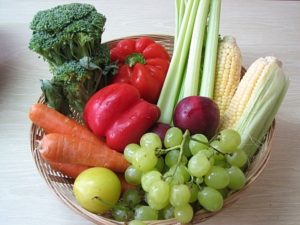
3. Irrespective of how good a diet is in optimising the metabolic effect on your body, the fact remains nonetheless that it is still possible to gain weight eating a wholesome, natural, minimally processed and nutrient-dense diet. It is probably more difficult to do so, but regardless, you cannot escape the fact that you have to be in a consistent calorie deficit to lose fat or a chronic caloric surplus to gain fat.
Links to references
- http://bit.ly/22Wq3IV
- http://bit.ly/1PRrWiR
- http://bit.ly/1neiOve
- http://bit.ly/1RI0XIp
- http://1.usa.gov/1OMkAhz
- http://bit.ly/1JGSkg7
- http://1.usa.gov/1RI6xur
- http://1.usa.gov/1RyArDb
- http://1.usa.gov/1ZoMwyV
- http://bit.ly/1W1WLUA
- http://bit.ly/1OnGFPO
- http://bit.ly/1SJohX1
- http://bit.ly/1Omdz3o
- http://bit.ly/1Omc9WJ
For local Townsville residents interested in FitGreyStrong’s Exercise Physiology services or exercise programs designed to lose weight, improve muscular strength, physical function (how you move around during the day) and quality of life or programs to enhance athletic performance, contact FitGreyStrong@outlook.com or phone 0499 846 955 for a confidential discussion.
For other Australian residents or oversees readers interested in our services, please see here.
Disclaimer: All contents of the FitGreyStrong website/blog are provided for information and education purposes only. Those interested in making changes to their exercise, lifestyle, dietary, supplement or medication regimens should consult a relevantly qualified and competent health care professional. Those who decide to apply or implement any of the information, advice, and/or recommendations on this website do so knowingly and at their own risk. The owner and any contributors to this site accept no responsibility or liability whatsoever for any harm caused, real or imagined, from the use or distribution of information found at FitGreyStrong. Please leave this site immediately if you, the reader, find any of these conditions not acceptable.
©FitGreyStrong

